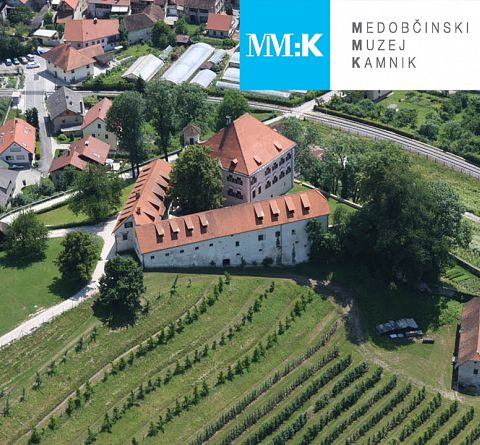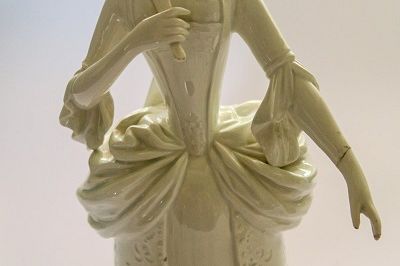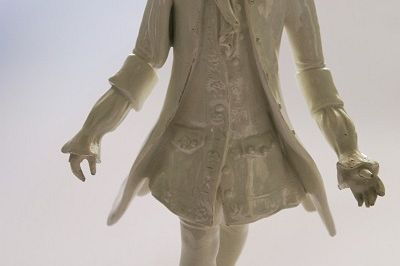Figurines Lady and cavalier, porcelain, ca. 1770
A pair of porcelain figurines consisting of two: lady from the time of King Louis XVI of France (1770-1780) and a cavalier from the copf style period (ca. 1770-1780). They are both dressed in the typical dress of the upper class of the 1770s. Kamnik’s private collector Josip Nikolaj Sadnikar bought them from Oberst Retty around 1900.
They are made of Capo di Monte porcelain, sometimes written Capodimonte porcelain, made by the Fabbrica di Capodimonte in Naples, Italy. Capodimonte porcelain is known above all for its exceptional production of statuettes and figurines. Capodimonte porcelain, one of the greats of Neapolitan domestic production, traces its origins to the splendor of the Bourbon dynasty. In 1743, King Charles of Bourbon and his wife Amalia of Saxony decided to establish a centre for the production of porcelain in their Reggia di Capodimonte, with which they wanted to achieve quality porcelain like the German Meissen porcelain. This is how the Royal Capodimonte Factory was born. The special blend of soft textured clay was ideal for making miniature figurines that had a special “under glass” effect. They became a fashion hit in rich aristocratic and bourgeois apartments.
The heyday of the royal factory of Capodimonte certainly dates back to the last two decades of the 18th century, when a true art school was born under the leadership of Domenico Venuti, who produced valuable porcelain services. Today, the Royal Factory of Capodimonte is one of the largest museums in Naples, housing the most famous objects of the Neapolitan tradition. At the same time, it produces Capodimonte porcelain, which still carries the primacy of excellence all over the world.





